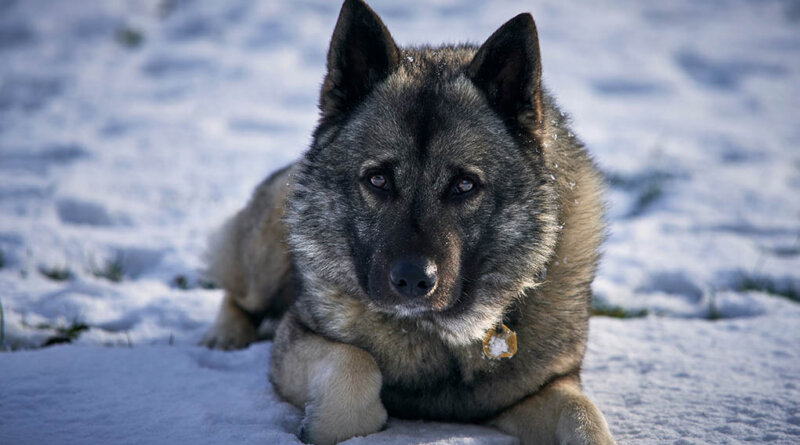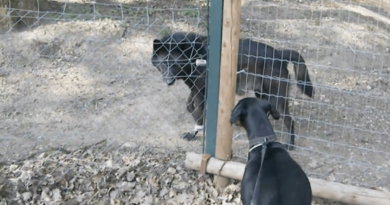Norwegian Dog Breeds
Norwegian dog breeds, originated in Scandinavian countries. This breed has adapted to thrive in cold weather conditions. Their coats are generally thick, enough to withstand the harsh cold. They usually possess pointed ears, exceptions to the attributes are referred to as the Hare Hounds.
You will learn here that some Norwegian dog breeds are rare, while some are very common in Norway. A walk in the park in Norway will leave you feeling like everyone owns a Norwegian dog. They make great family pets. They are loyal and can be very fun to be with. One thing stands true, Norway as a country loves dogs.
Norway and Their Dogs
There are 11 counties in Norway, with a combined total of about 500,000 – 600,000 dogs. Norwegians are arguably the biggest dog food spenders in the world. Across the country, there are numerous dedicated pet stores, where you can shop for anything related to pets, especially dogs. From food to toys, to even the best beds for them to lay in.
Norway is a natural fit for the Norwegian dog breeds, with the areas natural and open green spaces even in cities. These dogs can easily take a walk with family, just having fun. Norwegian people and their dogs are a match made in heaven. Norwegians love being outside, so do their dogs.
Norwegian Lundehund
This Norwegian dog breeds predominantly resides in the country. You’ll most likely not see it beyond the shores of Norway. Even within the country, seeing this dog is more of a rare sight. The Norwegian Lundehund is unique, and is used in hunting for puffins and their eggs around Norway’s remote islands. In Norway, puffin is known as Lunde.
The Norwegian Lundehund is also very flexible in their bone structure. They can make their necks touch their back, and this is an important leverage for them while trying to find muffins in holes and crevices. They can also easily manipulate their shoulder joints, achieving a ninety degree angle bend. With this, they are able to get traction on slippery and steep surfaces.
As stated earlier, the Lundehund, just like most other Norwegian breeds like to be constantly active and stimulated. Beyond needing activity, they are also brilliant problem solvers. If you don’t keep them active, they may entertain themselves in with destructive behavior.
This Norwegian dog breeds are very good at digging. It may be best for you to have a dedicated sandpit for them use. They just have to satisfy that crave. Standing at about 12 to 15 inches tall, these dogs are naturally hunters. If you live in an area with lots of wildlife be careful they don’t run away chasing prey. It may be safer to not have other smaller pets in the home with the Lundehund. They are generally healthy like other Norway dogs, but are prone to gastrointestinal complications.
Special Physical Features
This breed has unique physical attributes. The very first thing you’ll notice is the fewer teeth they possess than the average dog. Their dental structure is similar to that of the Russian Varanger Dog. This Russian dog existed about 5000 years ago, according to fossil readings.
There are six toes on each of their paws. Their colors range from fallow, to reddish brown, to tan. The tips of their hairs are also black, which gets darker with time.
Norwegian Elkhound
This is one of the most popular Norwegian dog breeds within and outside the country. They have an ancient history, part of which is their references in the Norse history and Mythology. In this history, they have been said to have ridden with Vikings, while acting as herders, protectors of livestock amongst other functions in the cold, harsh weather.
Their coat is very thick, as expected, providing them with ample protection against the weather. They are very active at homes, causing them to burn through their energy. Thanks to their stamina, there is no depletion of the energy. Their thick coat makes them very unsuitable to live in hot climate.
The Norwegian Elkhound exhibits immense loyalty but also has a mind of their own. Hence, if you want a dog that simply lounges on the sofa all day with you, this isn’t the dog for you. This is the dog for those who love to stay active and exercise. They don’t do so well with strangers, hence, it’s important that they are subjected to appropriate socialization while they are young, otherwise they can become too reserved.
Be ready for incessant brushing sessions for this dog breed to keep their hair at bay. They shed regularly, especially in the periods when their coat is experiencing biannual blow. Getting a good vacuum cleaner for your home is essential too.
Special Physical Features
The Norwegian Elkhound stands at about 20 inches in height, while weighing an average of 48 to 50 pounds. They are sturdy, with a broad head. Their tails are curled, and made of smooth double coat that is, more often than not, silver in color. Beyond all the cuteness, there is a great amount of work you’ll need to do if you’ll successfully own these dogs. They aren’t advisable for first time dog owners.
Hygen Hound
This Norwegian dog breeds were developed in the 19th century, with the primary purpose of hunting. Beyond their function as hunters, they are also developed to withstand the harsh conditions of the country. The combination of these two factors help them serve as great hunters, in spite of the arctic terrain they are in, while not getting tired easily. This dog breed requires a lot of exercises.
The Hygenhound is popular for their incredible sense of smell. They like to roam, and you’ll spend a lot of time and resources to get them back if they do. They have a tendency of not doing well with other small furry animals. Other than this, they are friendly and amiable, while they sometimes exhibit territorial guarding traits.
The Hygenhound over time has become rare, even in Norway. You may not want to waste time trying to find this breed.
Norwegian Buhund
This Norwegian dog breeds looks slightly like the smaller lundehunds. They come in a denser than usual coat, with a curly tail. This gives them the appearance of more traditional spitz dogs. You can find these dogs in North America, they are relatively common. Unlike the Hygen Hounds, they are not as rare.
Their history was thought to be somewhat similar to that of the Elkhound. They were developed and modified to adapt to life as a little farm dog. Their primary function on the farms is to aid in the guarding of livestock.
This Norwegian dog breed is always beaming with lots of energy and stamina. If you really like to work out, you can take these dogs with you on a walk or a run. They will push you to your limits as you try to keep up. Besides being active, intelligence is also one of their strong points.
Keeping them actively stimulated, is important. They are strong-willed and independent, loyal, friendly and joyful. Training this Norwegian dog breed may take extra patience.
Special Physical Features
They stand at 16 to 18 inches tall on an average, while weighing between 25 to 40 pounds. Their heads are wide, with prickled ears and short curled tail made of a coarse topcoat in black and wheaten coloring.
Halden Hound
These are scenting dogs, just like the Dunker and the Hygen dogs. They have similar appearance and size. The halden hound dogs are known to be quite even-tempered. They are confident and very eager to please their owners.
They are hunters, with the naturally birthed instincts. Hence, if they ever stray, recalling them is going to take a lot to achieve. While they are with you, you don’t need to invest much time into trying to groom them. Amongst all the Norwegian dogs, the Halden breed is the rarest. You’ll probably never find them anywhere outside their native country. Their numbers are incredibly low in Norway. They are near extinction.
Special Physical Features
They have a height of about 19.5 to 23.5 inches, while always weighing between 40 to 55 pounds. As a double-coated dog, they have a dense and coarse feel when you touch them. Their coats are colored in patches of black and white, while featuring some shades of tan on their heads and legs. You can also find these shades between their black and white patches.
Dunker
This Norwegian dog breeds are also known as the Norwegian Hound. Possessing a great sense of smell, makes them good for search and rescue. They have been in existence since the 1800s, and has since shown its incredible work rate. These dogs are not common as a pet, but as the hunters and trackers they have been bred to be. This shouldn’t mistaken as them being too aggressive, but it’s hard to keep up with their exercise needs and their sense of smell and tracking-ability.
This Norwegian dog breed can survive the harshest of conditions, while staying on the job. They are kind and tolerant, but long to spend almost every passing minute outdoors. This feature a pet owner can find it difficult to keep up with.
The dunker is a pack animal, and feels better in the midst of others of its species. The dunker loves to bark, and loves the sound of its own voice. Their astounding scent perception coupled with their overflowing stamina affords them the ability to lock their mind on a smell, no matter how faint, and follow it.
Special Physical Features
They are medium-sized dogs, with a well-proportioned body, sturdy and active. Like other dogs with a great sense of smell, they possess drop ears. Drop ears play a role with their sense of smell. While picking up a smell, they flap their ear. This then sets up a micro-air current that wafts scent molecules towards their nose.
They also have a distinct coat coloration. The coat has a white colored background color, with an attractive pattern of markings.
Final Thoughts
There aren’t many dog breeds in Norway. However, the few ones there are, are unique in their own ways. Other than the Elkhounds and Buhunds that are widely distributed across the globe, you’ll probably not find Norwegian dogs outside of their home country. They are simply rare, which makes them priced possessions.
Read Next: 14 Most Rare Dog Breeds on the Planet







